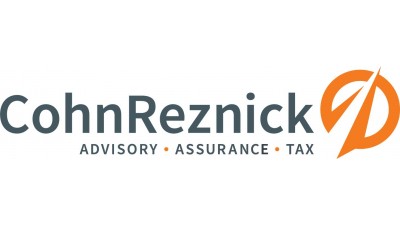PropTech’s Increasing Momentum Calls For A Strong IT Strategy

People search online for services ranging from online grocery delivery to ride-sharing. As of January, the internet saw 4 billion users, over half of the world’s population. On the business side, companies have shifted from proprietary software to cloud-based tools, allowing employees to work remotely and collaborate with increased efficiency. Cloud computing and software-as-a-service apps will become a $186B market this year, a 21% jump compared to last year.
For commercial real estate, one of the biggest changes has been the proliferation of data and how it is used. Objects, from lightbulbs to coffeemakers, are being connected to the internet with the goal of gathering data about how they are used. The products consumers and tenants use daily can now provide insight into their preferences and predict decision-making. This growing Internet of Things became an $87M industry last year, the Huffington Post reports, as more companies see the value in leveraging this data.
The insights gained from IoT-enabled devices can be scaled up to include entire smart buildings, tracking everything from energy use to temperature controls. That insight can help real estate professionals gain an edge against competitors when trying to renew a tenant lease or close a deal.
In response to this growing demand, commercial real estate has seen a surge in PropTech companies. Investment from venture capital funds, including PropTech-focused Fifth Wall, grew 63% from 2016 to $12B in 2017. CBRE recently acquired the startup Floored, adding interactive 3D imaging to its roster of real estate services.
The challenge behind PropTech adoption lies in figuring out how to make technology interact and communicate across platforms, CohnReznick partner Julie Miner said. With this data comes a need to organize and understand it, and this requires developing a strategy for tech adoption across every department in a company. Real estate must adapt accordingly by adopting these new technologies, or risk being left behind.
“To capitalize on the connectedness and optimization, there needs to be an overarching charter based upon culture and objectives,” Miner said. “There needs to be a thoughtful, strategic plan that is defined, initiated and continuously revisited.”
A major challenge with PropTech adoption is the speed at which new services enter the market, Miner said. With the internet and software-as-a-service more commonplace, companies have become more flexible in launching new products.
The trick is finding the platforms that elevate a real estate company’s ability to transact deals while also looking ahead to the longevity of the service. For an industry that is inherently risk-averse and one that deals with the long-term holding of assets, this thinking constitutes a major sea change in how a business operates.
To navigate this fast-changing environment, real estate companies can identify their main objectives using PropTech and leverage their existing capabilities. Companies need to ask themselves: What are the existing processes used to do business, and how can these processes improve by implementing new technology? Businesses need to identify what they want their differentiators to be in the industry, Miner said.
From there, companies can dive into more granular questions over whether they should build the software themselves or buy, or whether they require in-house capabilities versus outsourcing. Everything from data management to the level of technical expertise to implement this software must be considered.
What helps companies answer these questions is having a strategic plan that connects the motives of the strategy, the realities of the organization’s current state and the nature of the ideal target state of the business, Miner said.
Over 81% of companies have difficulty generating meaningful business intelligence, and 77% of companies believe they lose revenue because of inaccurate data, CIO reports. By integrating other departments of a business with information technology, companies can prevent these inaccuracies.
As real estate companies compete with one another to stay on the cutting edge of dealmaking, many have started to embrace the risk that comes with investing in new technologies. These changes don’t have to take an entire year or require a major overhaul, CohnReznick principal Mark Brown said. Rather, they should be minor updates that move with the flow of technological progress while serving the mission of the company.
“All it takes is a small number of investment dollars to take on a new technology and explore it,” Brown said. “You can bring in some of this newer technology, try it out, see if it lasts and find ways to incorporate it into your infrastructure. And that needs to be agile and dynamic.”
To learn more about how technology is disrupting CRE, click here.
This feature was produced in collaboration between Bisnow Branded Content and CohnReznick. Bisnow news staff was not involved in the creation of this content.

